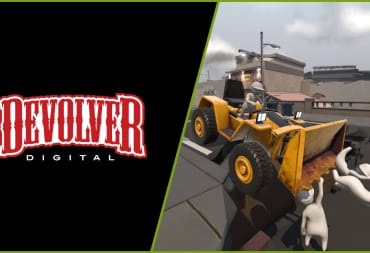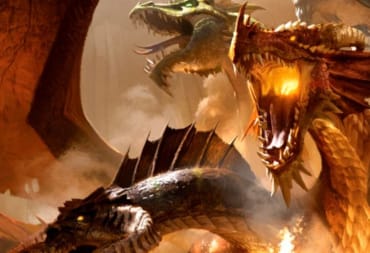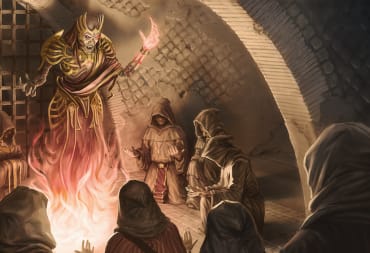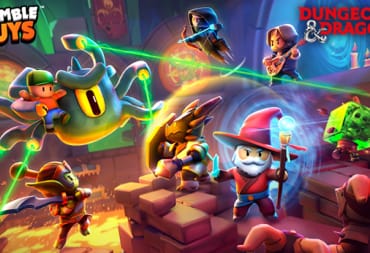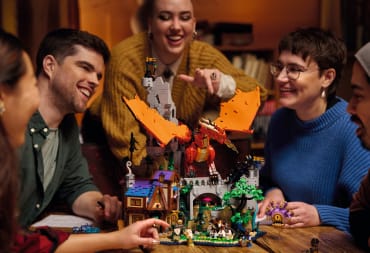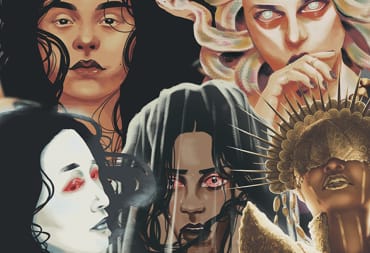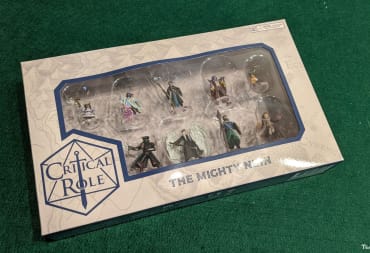Today at Wizards Presents it was announced that the next version of Dungeons & Dragons not only is coming soon, but that playtest material for the new system is available for players to look at today at DnDBeyond. This playtest material, correctly codenamed One D&D, is the first of what will be a series of playtest material for players to get a chance to toy around with the new mechanics and deliver feedback to Wizards of the Coast so that whatever One D&D becomes will be something fit for the players. With our hands on this test material, we wanted to dive in and take a look at what makes One D&D so different from 5th Edition.
Before we dive into the content for One D&D too much it's also important to note that changes to 5th Edition including the rebalancing of player races and monsters in Mordenkainen Present Monsters of the Multiverse were all to set up 5th Edition to be both forward and backward compatible with One D&D. The content from One D&D is a pivot from 5th Edition but the two systems are designed to work together. The first Playtest content contains information on the majority of the base races, new information about backgrounds, information on how magic classes are being redefined, and a big overhaul to feats.
One D&D - Races are mostly untouched
The first part of picking your character, what race do you want to be? Included in the Playtest material is the Human, Ardling, Dragonborn, Dwarf, Elf, Gnome, Halfling, Orc, and Tiefling. All of those should be familiar to players except for the Ardling.
The Ardling are a race of beings that were either born on the Upper Planes or have ancestors that originate from there. They will have the body of a human, but then the head of an animal. Depending on their Celestial Legacie those animal heads could be different. Examples given in the playtest material is that an Exalted Ardling might have the head of a cat, eagle, or goat but an Idyllic Ardling could have the head of a Bear or Toad. This race seems reminiscent of the half-animal demi-humans of greek mythology, or the gods of Egypt traditionally depicted with different animal heads.
Each race has its standard information such as creature type, size, speed, and lifespan, and then a list of traits that they get based on their race. For a Human, it would be the Resourceful, Skillful, and Versatile traits. Creatures that are normally tied to magic will get to learn a cantrip at the 1st level and will learn two more spells naturally as they reach the 3rd level and 5th level.
An Elf with the Drow Lineage will have a Darkvision increase to 120 feet and learn the Dancing Lights cantrip at 1st Level. At 3rd level they will learn Faerie Fire, and at 5th Level they will learn Darkness.
At first glance, it seems that the magical races will have a bit of a power boost for the early levels. The ability to innately learn a second-level spell to use at will regardless of your selected class can allow a lot of versatility even if you can only use it once per Long Rest.
There are a few changes here, but for the most part, it's just a slight pivot on what we're used to.
One D&D - It's important to remember your background
Choosing your Background has always granted you extra character traits like skill and tool proficiencies, sometimes they'll include a language proficiency, and even less often they'd have specific equipment that is added to your inventory. The Background has always felt to me as a larger part of the role-playing of my character than it has been about mechanically changing my character. After the big decisions of Race and Class, the Background has been a bit of space to help flesh out the character further.
In One D&D the backgrounds have been greatly improved forcing a larger sense of common features between them all. All of the Backgrounds that are included in the playtest material will include the following information:
- Ability Scores
- Skill Proficiencies
- Tool Proficiency
- Language
- Feat
- Description of the Background
All backgrounds having parity in what they can offer the players definitely makes for a more equal playing field for players to be conflicted over picking one from another.
The Ability Score modification being here is something that I really appreciate. In the past few years any new race has had its Ability Score modification removed. Mechanically it was nice to have these Ability Scores so that you'd already know how your race might fit into what build of character you're going to make but Wizards removed it with the simple idea that your race shouldn't be what defines how smart or dexterous you can be. Just like Humans in the real world, a Elf or Orc could come in any shape, size, or disposition. However tying these stat increases to a Background makes way more sense and allows for more variety in building a character. A Charlatan background character will receive a +2 to Charisma and a +1 to Dexterity, and then a Criminal will have a +2 to Charisma, but a +1 to Intelligence. These ability score alterations make sense in regards to the type of person that your character has become.
Each background also receiving a feat will also mean that those small differences that a background used to make thematically has a bigger impact on how the character will play.
I'm really excited about this Background update. It feels like now the big choices that will influence what kind of character you end up with will be expanded to Race, Class, and Background and it will do a lot to allow for larger versatility in what kind of character you're trying to create.
For example, two characters might both be members of the Fighter Class, but if one is a Human Guard and the other is a Dwarf Gladiator, the two bring different capabilities and flavor to the Class.
| Human Guard | Dwarf Gladiator |
|---|---|
|
---Human Traits--- Resourceful - You gain Inspiration whenever you finish a Long Rest ---Guard Traits--- Ability Scores: +2 Str, +1 Wis ---Alert Feat--- 1st-Level Feat You gain the following benefits: |
---Dwarf Traits--- Darkvision - You have Darkvision with a range of 60 feet ---Gladiator Traits--- Ability Scores: +2 Str, +1 Cha ---Savage Attacker Feat--- 1st-Level Feat You have trained to deal particularly damaging strikes. When you take the Attack Action and hit a target with a Weapon as part of that Action, you can roll the Weapon's damage dice twice and use either roll against the target. You can use this benefit only once per turn. |
When you take the example provided in the playtest between the Human Guard and the Dwarf Gladiator and put them side by side even at 1st Level you see an incredible difference between the abilities and opportunities that each of them could have.
One D&D - Magic Redefined
At the moment there's one large list of spells, but then an individual spell list per class. In One D&D however, these spell lists have been simplified. The spells have been broken out into three different categories: Arcane, Divine, and Primal.
- Arcane spells are those that call upon the magic of the world. The classes that will use Arcane spells include Bard, Sorcerers, Warlocks, Wizards, and Artificers.
- Divine Spells use the powers of Gods and the Outer Planes. The classes that will use Divine Spells include Clerics and Paladins
- Primal Spells are spells that use the force of nature and the Inner Plane. The classes that will use Primal Spells include Druids and Rangers
This is a nice breakdown of the types of spells that each class will be using. In looking at this list those in the Divine and Primal grouping do make sense but it does seem like Arcane is somewhat a "catch-all". Bards and Sorceres magic is innate to them, Wizards and Artificers magic comes from study and understanding of the arcane, and Warlock magic comes from an external force. While only partial spell lists have been revealed so far for each of these categories it almost sounds like the Warlock magic should fit into the Divine Spells category.
The spell list here goes through Cantrips and 1st Level spells to compliment the information about race and background but it's stated that there will be a later playtest that will go further in-depth into how spellcasting is different including how the subclasses will learn further spells.
One D&D - Lather, Rinse, Refeat
Feats are another thing largely changed, but with such a limited view on the feats as has been provided by the Playtest documentation the full scope of these changes is difficult to glean. From the example above between the two 1st Level characters you might have already noticed some changes but feats now have the following properties:
- Level
- Prerequisite
- Repeatable
- Description
While a feat and its description might be remaining somewhat the same the Level, Prerequisite, and Repeatable stat are a complete shift. Feats now won't just be a list of relatively similarly powerful Feats that you can pick and add to your character but they're an opportunity for you to further diversify.
In the playtest material we only get a look at 1st level Feats so none of them have a Prerequisite or are Repeatable but with the information presented, we can speculate what those might look like. The description for Prerequisite states that "If you lose a Feat's prerequisite, you can't use that Feat until you regain the prerequisite." It's not possible to lose a race or level, with the right DM you could lose access to a class, but it sounds like there will be Feats that are specifically tied to equipment or possibly even status. This can create unique scenarios in your game if you get separated from your equipment, say if you need to go into a fancy party and have to leave a Magical Item in coat check, it might alter the way you play as you can't activate some of your abilities.
The Repeatable feats are a little bit harder to guess, but will likely be tied to gaining additional spells from different spell lists or potentially even the acquisition and improvement of different senses. I could imagine a Dark Vision feat that each time you obtain it you added a further 15 or 30 feet until it became Superior Dark Vision.
Overall the changes that have already been shown for 1st-Level character creation in One D&D have me excited. As a DM it seems like it will be a lot more small pieces to be made aware of and to have to keep track of, but for players, I think the expansion of character creation and how unique you can make your character compared to the person next to you will mean that even in a campaign with players of only a single class you'll get a wildly different array of abilities and spells right out the gate.
Have a tip, or want to point out something we missed? Leave a Comment or e-mail us at tips@techraptor.net







